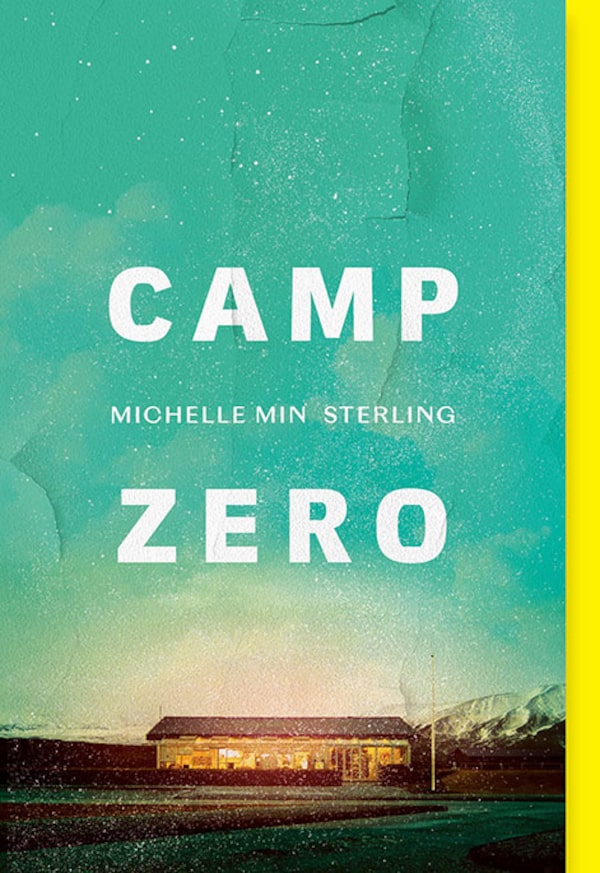- Title: Camp Zero
- Author: Michelle Min Sterling
- Genre: Fiction
- Publisher: Knopf Canada
- Pages: 304
Dystopian fiction finds its origins in the 18th century, though the form wouldn’t fully come together until much later in the late-19th and the early parts of the 20th century. As a response to utopian literature, dystopian fiction took a realistic, if pessimistic, lens and looked in on the worst that humanity had or could become and then built worlds around it that were meant to serve as warnings, or perhaps predications. Some works have proved prescient. As clichéd as it is to cite Orwell and 1984, the rise of a surveillance state – and market – has come to pass, though not precisely in the form that Orwell conceived. One might equally read J.G. Ballard’s 1962 novel The Drowned World, in which London is flooded by way of global warming, and wonder whether we might not soon be on track for something like that, too.
Books we're reading and loving this week: Globe staffers share their book picks
Writing about the worst of possible worlds is a way to process and share our anxieties about the present and the future. In mid-May the World Meteorological Organization warned that we would likely see 1.5 degrees of warming by 2027 – a temporary crossing of that climate threshold driven by a confluence of factors, including El Niño. It’s a breach we’ve been warned of and a warning of what our future could hold.

Supplied
Reading Michelle Min Sterling’s Camp Zero alongside news of present and future climate catastrophe, it’s hard to characterize the novel as dystopian near-futurism when it reads more like a chronicle of the present. The book is set in 2049, where intersecting groups orbit around Camp Zero in the Canadian North. The story is told from the perspective of a handful of characters, with chapters divided between them and offering several perspectives. But their living conditions are similar. Rising temperatures are driving populations away from deadly conditions in the south. U.S. colonialism threatens Canadian sovereignty, a plot-point the novel consciously contrasts with Canadian colonization of Indigenous peoples. Oil has been banned, but is still in use on the sly. Classes are at odds and inequitably affected by the changing, increasingly hostile planet. The novel might have been set in 2029 without being criticized as stretching the boundaries of credulity. Perhaps sooner.
Camp Zero is a study of how people behave in crisis, managing competing imperatives and loyalties. It’s a settler colonial critique of North America. It’s an exploration of racialized identity and gender and sexuality. It’s an assessment of technological capture. It’s a novel full of anxieties and warnings, expressing a frustration that ought to resonate – we learn so little despite every opportunity to do so.
At Camp Zero, an architect imagines a better version of the future, living harmoniously with nature as a wealthy, privileged man arrives from the south to escape his overbearing family and “teach” the diggers at the camp. Nearby, the “Blooms” – sex workers – inhabit a mall and serve the camp. Back in a wealthy community floating on the East Coast of the United States – the “Floating City” – broader machinations shape what happens in the Canadian North, and the world. At the same time, researchers at a nearby military research station are caught up in their own le Carré-like twists and turns of realpolitik shaped by the warming planet.
The novel succeeds by building a plausible dystopian world and filling it with characters who read true. The criticisms levelled around climate, class, technology and colonialism are criticisms we make today. That fact that they play out in the lives of characters just over two and a half decades from now reminds us that our problems today are, in many ways, the same problems we faced yesterday and will face tomorrow. In that sense, the novel is pessimistic.
In another sense, however, Camp Zero is about new beginnings and the emergent communities and connections that make them possible. Insofar as it touches on the possibility of newness, it’s a hopeful read. The fact that the book contains both is a testament to its layers, which is a far better way to write about what is to come than “future = bad.”
Toward the midway point of the novel, a conversation between a character and another, who invented the “flick” – a technological implant that allows the user to run an internet-like feed in their head – captures one of the running critiques in the novel: tech as zombification. “It turns out you can’t create a soul,” says the device’s creator, “but you can suppress its desire and longing if you redirect it.” The proper direction of human behaviour is a meta-theme in novels – it is present in one way or another in just about every good work of fiction ever written. But taking the right message, and warning, from studies of the proper direction of human behaviour has never been more important. Indeed, today, our lives may depend upon getting that right.